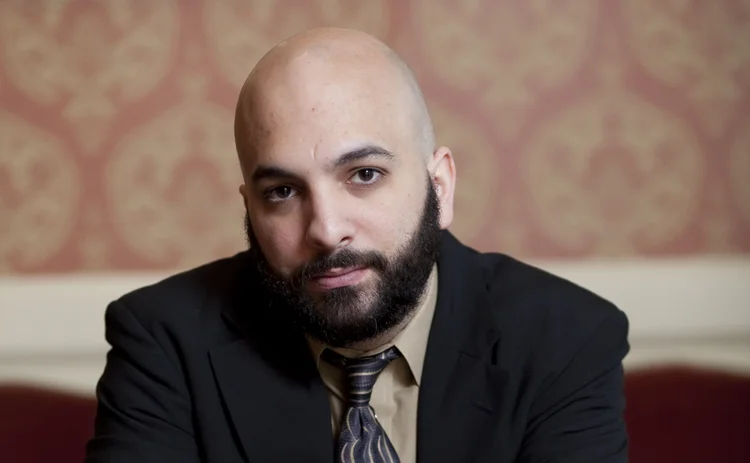Anthony Malakian: No Reconciling Dependency on Excel

I can’t decide if it’s reprehensible that firms are still struggling with the automation of reconciliations, or whether it makes sense. Perhaps the greatest challenge is that it’s difficult to change people’s behavior. Microsoft Excel and Access databases are familiar to many in the capital markets, and are passable when it comes to risk management. As Matthew Baglio of Greenwich, Conn.-based hedge fund AQR Capital notes in this month’s case study on page 26 on how the firm transformed its reconciliations processes, “Even with how clunky Excel can be, it’s still something where, when you compare two sets of data, it’s reliable.” That’s a hard argument to counter.
AQR, which manages nearly $80 billion, was an early adopter of an automated reconciliations platform and its reliance on Excel is now “minimal,” Baglio says. The greatest challenge wasn’t getting people comfortable with a move away from Excel to a platform from Electra Information Systems, but rather figuring out how best to use the system to fit the firm’s needs.
“When Electra showed us their STaARS platform, they showed us everything available, but we needed it for specific AQR needs,” Baglio says. “We needed to create a lot of rules based on the number of counterparties we use.”
This entailed setting up the right pipes and feeds to deal with the large volume of Swift messages from the fund’s various counterparties. AQR also needed to implement controls to ensure nothing was missed in terms of all the data entering and exiting the system.
Virginie O’Shea, analyst at Boston-based consultancy Aite Group, who has a lot of experience with systems in the reconciliations market, says the technology is applied to a variety of new areas today, and there is no silver bullet for tackling reconciliations. “There’s not generally a one-size-fits-all approach to reconciliations,” she says.
AQR now has a single account manager reconciling 30 portfolios on a daily basis, as opposed to 10 when it relied on Excel.
There are significant gains to be made by becoming more automated. O’Shea points to four areas in a recent report where reconciliations have taken on greater priority: the reduction of operational and key-person risk; cost containment and headcount reduction; opportunities in the market by onboarding new clients quickly and efficiently; and regulatory compliance.
But when it comes to replacing back-office platforms, especially those that have been around for some time, there is no gain without some pain. However, as AQR has shown, it is possible. The firm now has a single account manager reconciling 30 portfolios on a daily basis, as opposed to 10 when it relied on Excel. That has allowed it to turn staff toward new projects, such as building managerial metrics on top of the STaARS platform to better understand discrepancies for breaks between AQR and its counterparties, says Baglio.
Demanding Change
Hopefully, new regulatory demands stemming from the Dodd–Frank Act in the US and from the European Market Infrastructure Regulation (EMIR) will drive increased automation. Funds are now required to demonstrate better organizational controls and more transparency around their investment strategies, which includes security positions and management fees, notes Todd Sloan, product manager at Electra. New regulations also require solutions to be capable of aggregating and reconciling accounting information for both fund-level and investor-level data.
Take new swaps rules as an example. Many hedge funds will be labeled as major swap participants (MSPs), and, according to the Commodity Futures Trading Commission (CFTC), those firms will be required to reconcile their trades at specific frequencies, given their swap-trading volumes. There will, therefore, be regulations implemented mandating such funds to demonstrate that reconciliations have taken place. Another challenge lies within new rules around collateral management and margin calculations.
Pressure is also being exerted on funds from investors. Much in the same way that they are scrutinizing Form PF or risk management compliance, they are now asking more about reconciliations as part of their due diligence studies, demanding greater visibility into hedge funds’ security positions and management fees. Reconciliations, O’Shea notes, is the foundation for that.
Only users who have a paid subscription or are part of a corporate subscription are able to print or copy content.
To access these options, along with all other subscription benefits, please contact info@waterstechnology.com or view our subscription options here: http://subscriptions.waterstechnology.com/subscribe
You are currently unable to print this content. Please contact info@waterstechnology.com to find out more.
You are currently unable to copy this content. Please contact info@waterstechnology.com to find out more.
Copyright Infopro Digital Limited. All rights reserved.
You may share this content using our article tools. Printing this content is for the sole use of the Authorised User (named subscriber), as outlined in our terms and conditions - https://www.infopro-insight.com/terms-conditions/insight-subscriptions/
If you would like to purchase additional rights please email info@waterstechnology.com
Copyright Infopro Digital Limited. All rights reserved.
You may share this content using our article tools. Copying this content is for the sole use of the Authorised User (named subscriber), as outlined in our terms and conditions - https://www.infopro-insight.com/terms-conditions/insight-subscriptions/
If you would like to purchase additional rights please email info@waterstechnology.com
More on Trading Tech
Chris Edmonds takes the reins at ICE Fixed Income and Data Services
Edmonds is now leading ICE’s fixed income and data business as the rush to provide better data and analytics in fixed income builds.
Systematic tools gain favor in fixed income
Automation is enabling systematic strategies in fixed income that were previously reserved for equities trading. The tech gap between the two may be closing, but differences remain.
Waters Wrap: Examining the changing EMS landscape
After LSEG’s decision to sunset Redi, Anthony examines what might lie ahead for the EMS space.
This Week: Clear Street, AXA/AWS, TD Bank/Google Cloud and more
A summary of the latest financial technology news.
LSEG to sunset Redi EMS in favor of Tora
Sources say competitors will look to seize on the decision to win over Redi’s sizeable US client base.
WatersTechnology latest edition
Check out our latest edition, plus more than 10 years of our best content.
Getting aggressive: Overbond uses AI to assess dealer axes
The fixed-income analytics specialist has developed a new tool to help buy-side firms decide if they’re getting a good price from their dealers.
Most read
- Chris Edmonds takes the reins at ICE Fixed Income and Data Services
- Deutsche Börse democratizes data with Marketplace offering
- Sell-Side Technology Awards 2024: All the winners








